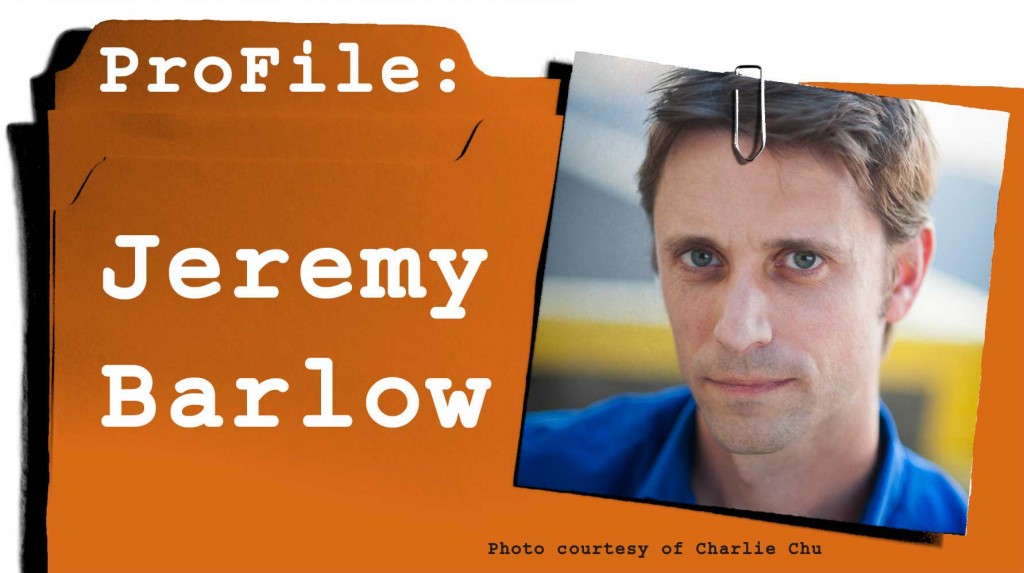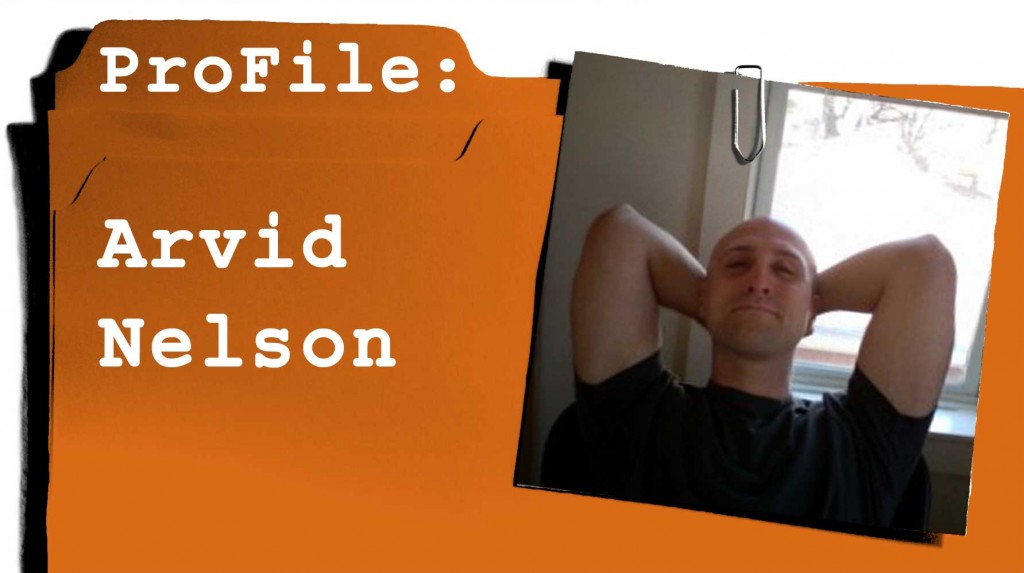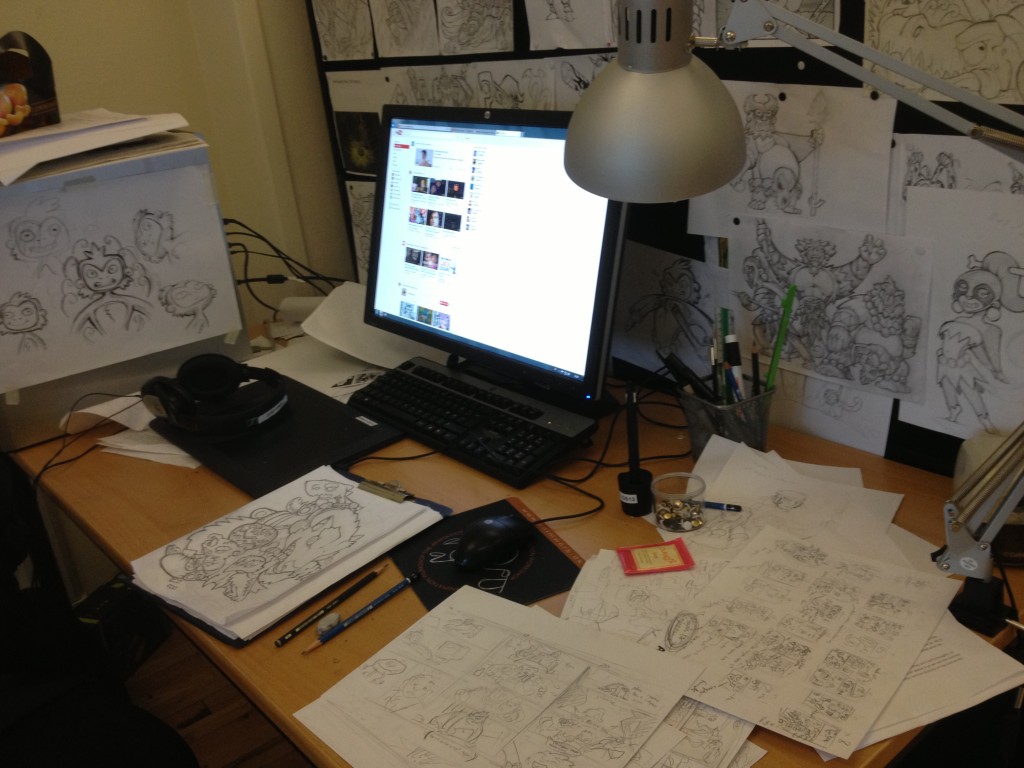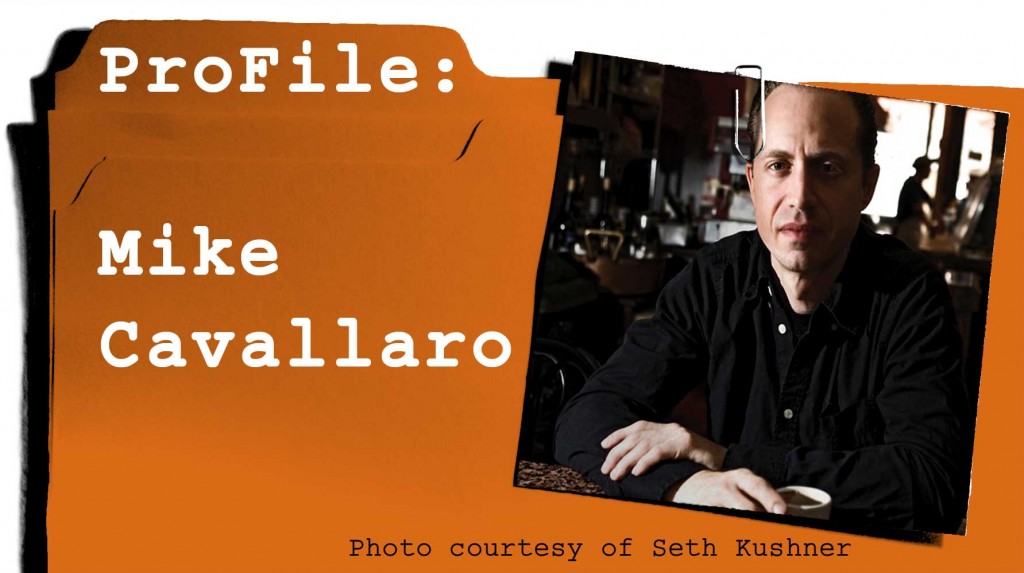In this episode I share some tips and suggestions for becoming a better artist. Drawing every day and everywhere is one thing, but what if you find yourself hating the end result? How do you get good at drawing and make it a habit? Well, click play and find out!
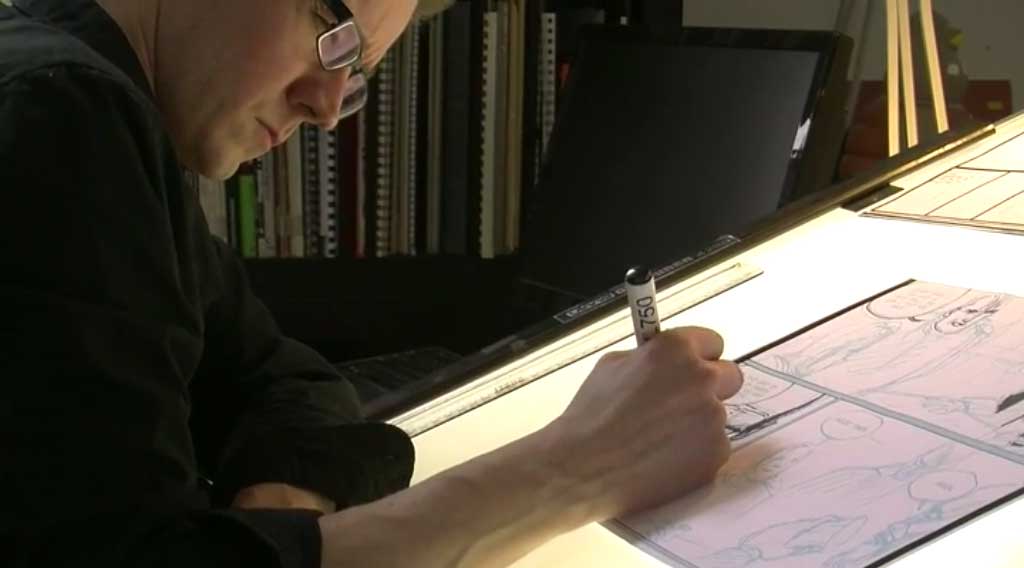
Pro Tips
ProFile: Jeremy Barlow
Jeremy Barlow is an Eisner Award nominated writer and editor whose graphic novel credits include Mass Effect Foundation,Dethklok: Metalocalypse, and R.I.P.D. City of the Damned. He lives in Portland OR, and is a member of famed Periscope Studio.
What made you decide to work in the medium of comics?
Comics have always been my first love. I grew up reading whatever comics I could get my hands on, and that passion has carried through my life. There’s something about the way comics work on your brain that’s totally unique; how the visuals and the text interweave, how your mind creates motion and context in the juxtaposition of static images — it’s like a magic trick. A great graphic novel can punch you right in the heart.
What part of the process is the most challenging or frustrating to you?
The stupid, unjustified self-doubt. Despite all I’ve accomplished, I still approach every new project feeling like I have no idea what I’m doing, that I’ve forgotten how to write a script, that I’m gonna blow it and it’ll be the last job I ever get. Typical impostor syndrome. I know it’s not true, and I always push through it to get the work done, but, man — it wastes a lot of time.
Beyond that, my professional life would be so much easier if I could draw my own stories. Working in a visual medium without a visual skill set is a little bit crazy. I have stories I’m burning to tell — and I can see how great the graphic novels would be if they existed — but without an artistic partner to help me execute them, they’re just folders on my hard drive.
It’s just a fact of being a writer in this medium, and I’m not alone in it, I know. It’s all worth it when you do finally establish a collaboration and put it all together. It’s totally worth it.
If you could give one piece of advice to an aspiring comics creator, what would that be?
Give yourself permission to be terrible. For a while. Getting good at anything takes time — you have to put in the hours and get the crap out of your system, because we’re all terrible when we start out. I know when you’re starting out the drive is to make it a career as soon as possible, but you’re better off in the long run to spend the time developing your voice and your point of view. And the only way to do that is to do a lot of crappy work and to learn from your mistakes. God knows I’m still learning.
It’s okay for your first drafts to be awful. They should be! No one’s going to see it, so stink it up! Because no one gets it right the first time, and the real magic happens when you’re editing or revising your work, so just get it out. You can’t fix something if it doesn’t exist.
However, don’t lean on that on an excuse not to up your game. It’s okay to start terrible, but don’t stay there!
website: jeremybarlow.com
Twitter: @Jeremy_Barlow
ProFile: Scott Hampton
Scott Hampton (born April 10, 1959) is an American comic book artist well known for his painted artwork. He is the brother of fellow-comics-creator Bo Hampton. Working as a freelance comic book artist, Hampton has illustrated such iconic properties as Batman, Sandman, Black Widow, Hellraiser, and Star Trek in addition to work on his creator-owned projects such as The Upturned Stone. His works include Spookhouse, released in 2004 by IDW Publishing, in which he adapted his favorite ghost stories into sequential form, Batman: Gotham County Line and the creator-owned series Simon Dark with writer Steve Niles for DC Comics.
What made you decide to work in the medium of comics?
My older brother, Bo, introduced me to comics and it was love at first sight.
What part of the process is the most challenging or frustrating to you?
Pacing. Telling a story smoothly I find quite challenging.
If you could give one piece of advice to an aspiring comics creator, what would that be?
Learn the craft of writing as well as drawing. Tell your stories. Don’t give up.
More at http://scotthamptonart.com/
ProFile: Arvid Nelson
Arvid Nelson lives in Western Massachusetts with his loving wife, an angelic son, and a large television. He’s written for all the major publishers, he believes in the Oxford Comma, and his biggest claim to fame is Rex Mundi. Follow him at arvidland.com.
What made you decide to work in the medium of comics?
I worked on a couple of movies after college, and I quickly discovered film wasn’t for me. Movies involve a lot of logistics and fund-raising. The artistic process inevitably gets garbled. Comics seemed like a great “shortcut”, a great way to tell a big-budget story for practically no money. So I guess it was a cynical, calculated decision in some ways – I mean, I can’t say I have a burning passion for comics – but at the same time, it was in pursuit of telling the best stories I could, without making compromises.
What part of the process is the most challenging or frustrating to you?
Depending on other people! For instance, a key team member on one of my stories fell ill and stopped producing for a year. A year, Palle! He’s okay now, and that’s by far the most important thing, but it really hurt our momentum. Imagine waiting for a year in between episodes of The Wire or whatever. It breaks your heart.
If you could give one piece of advice to an aspiring comics creator, what would that be?
Well, two things, and they’re related – persistence and forgiveness. By “forgiveness” I mean “forgive yourself for failure”. The more you forgive yourself, the more you’ll improve. And that leads to the other thing – persistence. You will pour your heart into a comic and then let it loose on the world with hope bubbling in your soul… only to be completely ignored. That’s okay. It happens to everyone, or, at least, I hope so, or I’m a total jerk. But if at first you don’t succeed, fail, fail again. Failure never gets any easier, but if you keep at it for a few years and then look back at where you started… you’ll say to yourself “Wow, I have really come a long way”.
Hard Choices with Palle Schmidt – Comics for Beginners Podcast episode 16
Last week I taught a comics class at the Animation Workhop in Viborg. This week’s podcast is a summary of some of the things I taught – and learned myself! The main theme is choice: what kind of choices you need to make before you start drawing, and what you can do to make the process easier for yourself. As usual, your host is writer/artist Palle Schmidt.
ProFile: Mike Cavallaro
Mike Cavallaro is from New Jersey, where he attended the Joe Kubert School of Cartoon Art, and has been a working cartoonist for over 20 years. His clients include DC Comics, Marvel, Image, First Second Books, Archie, MTV, Warner Brothers, Cartoon Network, and others. Mike’s comics include Parade (with fireworks), Nico Bravo & the Celestial Supply Shop, The Life and Times of Savior 28, with J.M. DeMatteis, Foiled and Curses, Foiled Again, with Jane Yolen, Recognition for Mike’s work includes YALSA’s “Great Graphic Novels For Teens” list, a Will Eisner Comics Industry Award-nomination, a Junior Library Guild selection, and others. Mike resides in New York City and is the vice-chairman of the National Cartoonists Society, Manhattan Chapter.
What made you decide to work in the medium of comics?
I was always interested in art, primarily illustration, and the more fantastic and unreal, the better. By the time I was graduating high school, I had already been working at my local comic shop for four years — it was my first job. My favorites were artists like Barry Windsor Smith, John Buscema, Frank Frazetta, Joe Kubert, Los Bros Hernandez, and of course many others. It was obvious that I was going to pursue some kind of art, and I guess I chose the one I was most influenced by at the time: comics. While other kids were applying to various colleges, I only applied to one place: the Joe Kubert School. After that, it was all comics, all the time, for the next couple years, and I guess it’s been that way ever since — pretty much the last 20 years.
What part of the process is the most challenging or frustrating to you?
All parts! Seriously, I suppose there are different degrees of “frustrating”. I mean, I’m frustrated by lettering because I don’t really want to do it, so it feels like sort of a drag to me. But, on my creator-owned stuff, there’s no one else to do it, so I gotta. But that’s more about tedium than anything else. There’s the frustration you feel when you can’t draw something the way you want and you’re erasing a hole into the paper and wasting time. But that’s somehow different. It’s not tedium, it’s coming face-to-face with your limitations and learning how to either exceed them or circumvent them in some way.
All-in-all though, the thing I find most challenging with comics is the writing. There was probably a point when I was discovering comics where I’d buy something just because it looked amazing. That’s not enough for me anymore. I need a story I’m interested in or I can’t be bothered. So I believe story (not just writing, but STORY: art and words working together) is the most challenging and important part of the whole thing.
If you could give one piece of advice to an aspiring comics creator, what would that be?
Be versatile. Don’t just do one thing, one way. Be able to shift gears, employ multiple techniques and styles, and have a command of all aspects of comics making: writing, pencilling, inking, lettering, and coloring.
Follow Mike’s work at mikecavallaro.com
